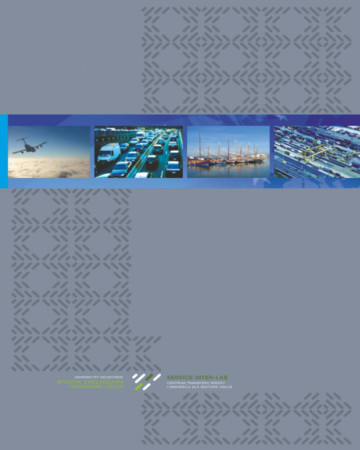
ISSN: 1644-275X
eISSN: 2353-3005
OAI
DOI: 10.18276/ptl.2017.39-12


Issue archive /
nr 3 (39) 2017
ESI IN THE SUPPLY CHAIN OF MODULAR PRODUCTS
| Authors: |
Grażyna
Wieteska
Wydział Zarządzania, Uniwersytet Łódzki |
| Keywords: | ESI modularization supply chain |
| Data publikacji całości: | 2017 |
| Page range: | 12 (129-140) |
| Klasyfikacja JEL: | L23 O32 |
Abstract
Discussion around the product development collaborations is very actual today because of growing pace
of technological change. However, there are still few qualitative papers on product development in the per-
spective of more than one supply chain link. The aim of this paper is to recognize the role of an internal and
external cooperation in product development process as well as identify the determinants of Early Supplier
Involvement in supply chain of modular products. The paper consists of following sections: introduction,
methodology, research results, conclusions and the proposal of future research. Author used in-depth
interview and case study methods. There are many factors that are of importance while deciding on ESI
(e.g. product characteristics, production environment, the company’s responsibility for detailed product
specification). Based on conclusions, three hypothesis were formed. They can be an input to the further
(quantitative) research: H1: Modularization strategy positively influences ESI, H2: Partnership positively
influences ESI, H3: Modularization strategy positively influences partnership
Download file
Article file
Bibliography
| 1. | Büyüközkan, G., Arsenyan, J. (2012). Collaborative product development: a literature overview. Production Planning & Control. The Management of Operations, 23 (1), 47–66. |
| 2. | Caniëls, M.C.J., Gelderman, C.J., Ulijn, J.M. (2010). Buyer-supplier relationship development: An empirical study among Dutch purchasing professionals. Journal of Enterprising Culture, 18 (2), 107–137. |
| 3. | Cooper, R.G. (2001). Winning at New Products: Accelerating the process from idea to launch, 3rd edition. Reading, MA: Perseus Book |
| 4. | Cooper, R.G. (2008). Perspective: The Stage-Gate Idea-to-Launch Process – Update, What’s New, and Next Gen Systems. Journal of Product Innovation Management, 25 (3), 213–232. |
| 5. | Crawford, C.M., Benedetto, C.A. (2013). New Products Management. McGraw Hill International Edition, 11th edition. |
| 6. | Christopher, M. (2000). The agile supply chain: competing in volatile markets. Industrial Marketing Management, 29 (1), 37–44. |
| 7. | Dodgson, M., Gann, D., Salter A. (2008). The management of technological innovation: strategy and practice. Oxford–New York: Oxford University Press. |
| 8. | Drucker Peter, F. (2006). Innovation and Entrepreneurship. London and New York: HarperBusines. |
| 9. | Dube, P., Muyengwa, G., Battle, K. (2013). The impact of product modularisation on supply chain relationships: a furniture industry perspective. SAIIE25 Proceedings. |
| 10. | Gershenson, J.K., Prasad, G.J.; Zhang, Y. (2003). Product modularity Definitions and benefits. Journal of Engineering Design, 14 (3), 295–313. |
| 11. | Handfield, R.B., Lawson, B. (2007). Integrating Suppliers Into New Product Development. Research-Technology Management, 50 (5), 44–51. |
| 12. | Harary, A., Pulizzi, U. (2015). Global Innovation Barometer 2014 – Insight on Disruption, Collaboration and the Future of Wo r k, General Electric. Retrieved from: www.gereports.com/ innovation-barometer-2014/ (15.01.2015). |
| 13. | Jaruzelski, B., Dehoff, K. (2007). The customer connection: the global innovation. „Strategy & Business Magazine”, PwC Strategy & Inc, 77. Retrieved from: www.strategy-business.com/article/07407 (12.11.2017). |
| 14. | Lee, H.L. (2002). Aligning supply chain strategies with product uncertainties. California Management Review, 44 (3), 105–119. |
| 15. | Matejun, M. (2012). Metoda studium przypadku w pracach badawczych młodych naukowców z zakresu nauk o zarządzaniu. Zeszyty Naukowe Uniwersytetu Szczecińskiego, 666, Problemy Zarządzania, Finansów i Marketingu, 19, 203–214. |
| 16. | Nellore, R., Söderquist, K. (2000). Portfolio approaches to procurement: Analyzing the Missing Link to Specifications. Long Range Planning, 33 (2), 245–267. |
| 17. | Piran, F., Lacerda, D., Antunes, J., Viero, C., Dresch, A. (2016). Modularization strategy: analysis of published articles on production and operations management (1999–2013). International Journal of Advanced Manufacturing Technology, 86 (1–4), 507–519. |
| 18. | PricewaterhouseCoopers (2013). Supplier Relationship Management. How key suppliers drive your company’s competitive advantage?, Retrieved from: www.pwc.nl/nl/assets/documents/pwc-supplier-relationship-management.pdf (12.11.2017). |
| 19. | Voss, C., Trent, R.J., Monczka, R.M. (1999). Achieving world-class supplier quality. Total Quality Management, 10 (6), 927–938. |
| 20. | Tsikriktsis, N., Frohlich, M. (2002). Case research in operations management. International Journal of Operations & Pro-duction Management, 22 (2), 195–219. |
| 21. | Tylman, B. (2015). Opłacalność inwestowania w badania i rozwój. Warszawa: PwC. |
| 22. | Wieteska-Rosiak, B. (2013). Zrównoważony transport w przedsiębiorstwach międzynarodowych. Transport Miejski i Re-gionalny, 3, 8–12. |
| 23. | Wagner, S.M. (2012). Tapping Supplier Innovation. Journal of Supply Chain Management, 48 (2), 37–52. |